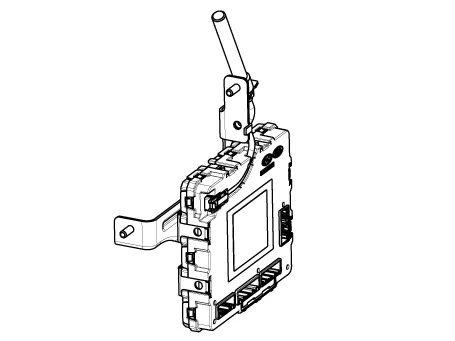Hyundai Ioniq (AE): Tire Pressure Monitoring System / TPMS Receiver. Description and operation
| Description |

| 1. | Mode
|
| 2. | Overview
|
| Operation |
| 1. | General Function
|
| 2. | General Conditions to Learn New Sensors :
|
| 3. | General Conditions to Un-Learn a sensor that is removed :
|
Replacement1.Remove the valve core and deflate the tire.2.Push the tire as illustration below by using tive change machine.3.Loosen the nut and then remove the TPMS sensor.
Removal1.Disconnect the negative (-) battery terminal.2.Remove the glove box.(Refer to Body - "Glove Box Upper Cover Assembly")3.Remove the smart key unit.
Other information:
Hyundai Ioniq (AE) 2017-2022 Service & Repair Manual: Heater Unit. Components and components location
Component Location1. Heater unit assemblyCompoents1. Heater core cover2. Heater core & Seal assembly3. Mode actuator [LH]4. Temperature control actuator [LH]5. Shower duct [LH]6. Duct sensor [Floor]7. PTC Heater8. Duct sensor [Vent]9. Heater & Evaporator lower case10.
Hyundai Ioniq (AE) 2017-2022 Service & Repair Manual: PTC Heater. Repair procedures
InspectionOperating Logic Test (Manual only)Inspect the PTC operation by confirmation logic as follows.1.Entering(1)Set the Floor mode and maximum heating position.(2)Turn off the blower switch.(3)Press the intake (recirculation) button 5 times or more.
Categories
- Manuals Home
- Hyundai Ioniq Owners Manual
- Hyundai Ioniq Service Manual
- Engine Mechanical System
- Engine Mounting. Components and components location
- Aux. Battery Saver+ (Plug-in hybrid vehicle)
- New on site
- Most important about car
